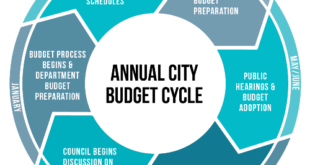By Kevin Slimp
There is a rule of thumb which almost always proves to be true at newspaper conventions: attendance drops drastically on Saturday morning. There are plenty of theories on the subject from “too much fun on Friday night” to “heading home to be with the kids.”
-

Kevin Slimp Whatever the cause, you can imagine my surprise when I walked into a room in Des Moines, Iowa, two days ago and realized it would be necessary to add chairs. Honestly, I didn’t expect many folks to show up for a Saturday morning session where we would primarily be looking at numbers, but show up they did.
The topic was “What’s Really Going on in the Newspaper Industry.” My plan was to discuss results from my most recent survey, completed only days before the Des Moines conference. It was obvious the attendees really wanted to know my thoughts on that topic.
After completing a major survey, I attempt to discuss one or two findings in each of my subsequent columns for newspaper industry readers until we have covered the most relevant findings. As with previous studies, there is enough information to write books about the state of the industry, but I will stick to the most interesting discoveries.
A little quiz
Perhaps the most thought-provoking discussion in Des Moines revolved around newspaper ownership. Before sharing survey results, I gave the group a little quiz. Their mission was to guess how North American newspaper publishers responded to the survey. Not to answer the questions in the survey as they related to their own newspapers.
When asked to guess the percentage of newspapers that are independent, not related to any group or other newspapers, most of the attendees guessed the number would be pretty low. They were surprised to learn that 53 percent of newspapers in the U.S. and Canada are independent, without any relationship to even a small group.
I found that most interesting because most of the folks in the room were from independent publications, not part of a larger group. Yet they assume that most of their brethren are from large newspaper groups. And as I discussed in a previous column, independent papers reported better health and more growth than those that are part of a group.
There were several other questions where most publishers guessed their papers were different from most others. When the numbers are broken down, however, we find that ownership plays a bigger role than anything else in determining how newspapers respond. Most independent papers respond very similarly to most questions, as do most small, mid-sized and large group newspapers.
Focusing on page count
Today, I would like to focus on one interesting correlation: page count vs. newspaper health. Most newspapers, 53 percent, responded their page count was relatively unchanged from three years ago. That is 20 percent higher than the number which reduced the number of pages over the past three years. While 33 percent reported fewer pages, 12 percent answered that they have increased the number of pages.
We could argue all day whether newspapers are healthier as a result of having more pages, or whether healthier papers produce more pages because they are in better shape. I would guess that, as in most topics of disagreement, the truth is somewhere in the middle.
There is, however, no doubt newspapers that report a higher page count than three years ago also report significantly increased health over those same years. An astounding 81 percent of newspapers that increased the number of pages report better overall health than three years ago.
That figure is even more amazing when compared to newspapers with decreased page counts over those same years. Of those, only 17 percent report improved health over the same period.
Among the largest group, made up of papers which report the same number of pages as three years ago, 38 percent indicate improved health since 2013.
Chicken or egg?
This discussion could easily turn into a “Which came first, the chicken or the egg?” conversation. I would suggest there are enough responses to persuade me that one of the indicators of newspaper health is page count as compared to previous years.
For some newspapers, decreasing the number of pages and staff members is a sure way to improve the bottom line. But if these 859 publishers and other newspaper executives can be believed, decreasing the number of pages has a high chance of leading to diminished health, rather than increased profits.
I’ll stop there. If you’re fortunate, or perhaps unfortunate, enough to be in one of my audiences in Rochester, New York; Amarillo, Texas; Pittsburgh, Pennsylvania; or Mitchell, South Dakota, over the next few weeks, I’m sure we’ll find plenty of time to discuss these surveys in more detail.
 Nevada Press Association The best in Nevada journalism since 1924
Nevada Press Association The best in Nevada journalism since 1924




